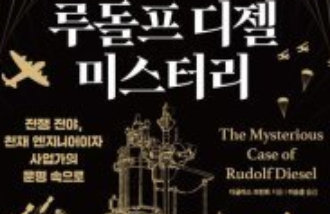Trump strike on Iran sparks North Korea concerns
Trump strike on Iran sparks North Korea concerns
Posted June. 23, 2025 07:40,
Updated June. 23, 2025 07:40

The United States’ surprise airstrike on three major Iranian nuclear facilities using Massive Ordnance Penetrators (GBU-57s) on June 21 has raised speculation that North Korea could be the next target. Observers point to the fact that U.S. President Donald Trump, during his first term, had openly considered a preemptive strike against North Korea. As a result, Kim Jong Un and the North Korean leadership are expected to be on high alert, closely monitoring developments through channels such as Russia.
During the 1993–94 nuclear crisis, the Clinton administration had seriously reviewed bombing North Korea’s Yongbyon nuclear site using F-117 stealth fighters and Tomahawk missiles. The plan was ultimately shelved due to fears of all-out war and massive casualties. At the time, the Pentagon estimated that such an operation could result in 50,000 American military casualties and hundreds of thousands more among South Korean forces and civilians within 90 days of the conflict’s onset.
In 2017, as tensions between Pyongyang and Washington peaked following North Korea’s intercontinental ballistic missile (ICBM) tests and nuclear activities, the Trump administration again reviewed military options. Among them was a limited, symbolic strike on North Korea’s nuclear facilities, often referred to as the “bloody nose strike.”
Analysts say that the recent U.S. strike on Iran using B-2 stealth bombers may serve as a powerful warning to North Korea. “The successful use of high-impact strategic weapons to destroy Iran’s nuclear infrastructure could be leveraged as a pressure tactic in future U.S.–North Korea nuclear negotiations,” a military source said.
However, experts within the military largely agree that a direct strike on North Korea is unlikely due to vastly different conditions from Iran. While Iran’s major nuclear facilities are located 1,500 to 1,700 kilometers from Jerusalem, North Korea’s Yongbyon and Kangson facilities are only about 270 kilometers from Seoul.
Camp Humphreys, the largest U.S. military base in Northeast Asia, is just 300 kilometers from those North Korean sites. If the U.S. were to bomb North Korea’s nuclear facilities, Pyongyang could retaliate within seconds or minutes with massive artillery or missile strikes on Seoul and U.S. military installations. Armed with short-range ballistic missiles and rocket artillery, North Korea could unleash tens of thousands of shells per hour on South Korea. Given that South Korea’s air defense system is less robust than Israel’s Iron Dome, large-scale casualties would be inevitable.
Moreover, North Korea is believed to possess up to 50 nuclear warheads, has built numerous covert nuclear sites, and has deployed various delivery systems. Should Pyongyang perceive a U.S. strike as an existential threat, it could launch a nuclear attack on South Korea, prompting a nuclear retaliation by the United States and potentially triggering a catastrophic escalation.
Trump has repeatedly referred to North Korea as a “nuclear power” since taking office, signaling a willingness to negotiate and suggesting that military options are off the table. South Korea is also highly unlikely to support any U.S. preemptive strike on the North. “Washington’s view is that it is now too late to neutralize North Korea’s nuclear capability by military means,” a defense source said. “The U.S. chose to act against Iran’s nuclear threat before it could become a second North Korea.”
Sang-Ho Yun ysh1005@donga.com






![교수와 제자들 창업했더니 260억 몰려… 세계 5곳만 가진 기술[허진석의 톡톡 스타트업]](https://dimg.donga.com/c/138/175/90/1/wps/NEWS/IMAGE/2025/12/05/132909952.4.jpg)
